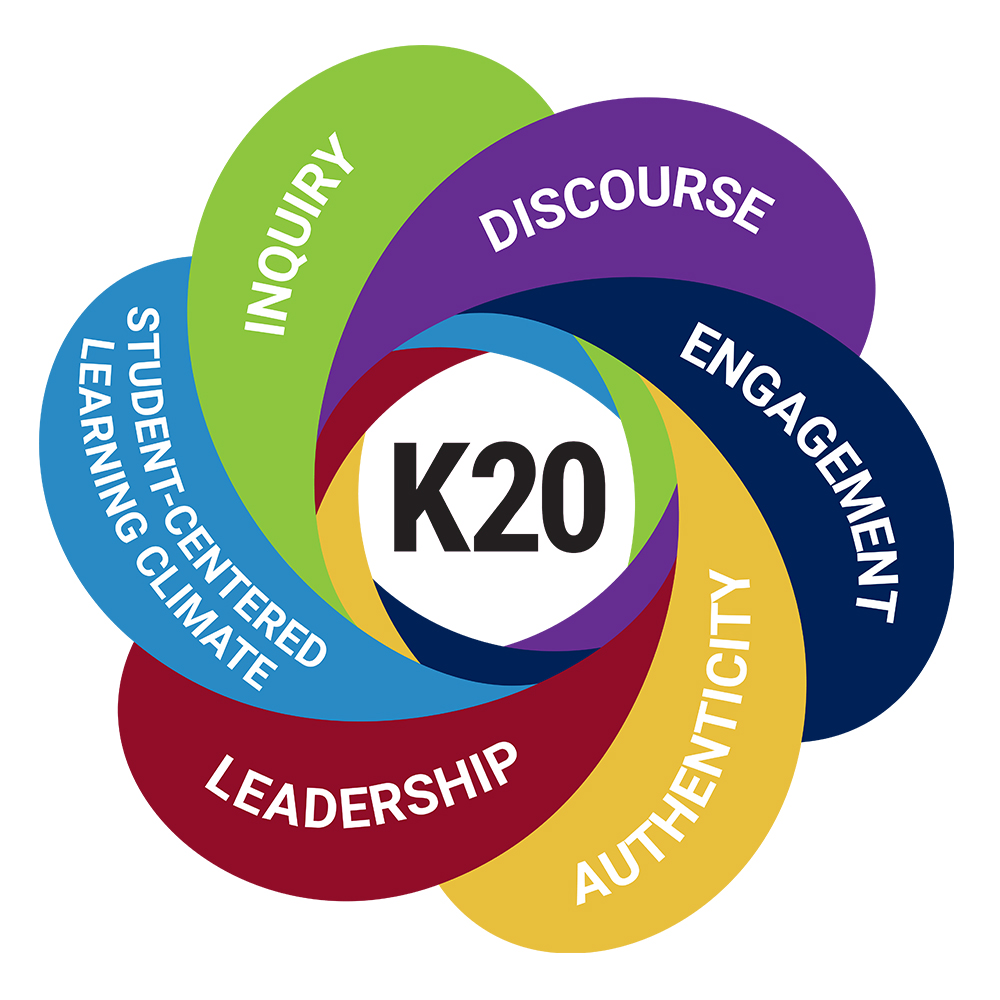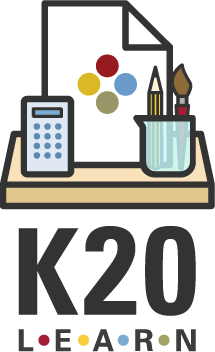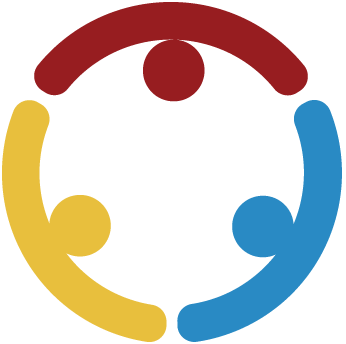
The "Reading Realities: Using E-Readers to Engage and Support Students' Critical Reading Skills" professional development focuses on using Kindle e-readers and Google Expeditions to support student reading engagement. Research suggests that students are more eager to read when using an e-reader or mobile... Read more »

In this interactive session, participants will explore a career roadmap and experience a mini-virtual career expo. Participants will leave with a variety of ideas about implementing virtual career experiences in their own GEAR UP programs. Read more »
Target Audience
Calendar Placement
Group Size
Related
Intention Or Purpose

This 120-minute professional development focuses on understanding how virtual reality (VR) can take teaching and learning to a higher level through real-world connections, 21st-century skills, and critical thinking. Participants will explore VR, and then use VR resources to create a lesson or classroom... Read more »
Target Audience
Calendar Placement
Group Size
Intention Or Purpose

This session examines the barriers, benefits, and process of creating lessons that touch on standards from more than one subject area. Participants view samples of student products from multidisciplinary lessons, analyze a K20 LEARN lesson, and work to create ideas for collaborative lessons in their... Read more »
Target Audience
Calendar Placement
Group Size

In this professional development session, participants will evaluate vocabulary students might encounter in college and career readiness programming. Participants will engage in strategies that reinforce authentic vocabulary instruction of Tier 2 words. Read more »
Target Audience
Calendar Placement
Group Size
Intention Or Purpose
Related

In this professional development, participants learn about one of the K20 Center’s IDEALS, Student-Centered Learning Climate. Participants use Mentimeter to share experiences from their time as a student that they feel reflected a learning climate or approach that was student-centered. Through card... Read more »
Target Audience
Calendar Placement
Group Size
Intention Or Purpose

The Meet Your New AI Assistant session focuses on the use of AI technology to enhance teaching practices that increase student engagement and academic performance. In addition, participants will explore ways to use AI technology to streamline administrative tasks and increase their capacity to focus... Read more »
Target Audience
Calendar Placement
Group Size
Intention Or Purpose

The Leading Educators in Authentic Development (LEAD) workshop is a series of professional learning sessions that develop teachers’ skills in leading professional development at their school sites. This workshop features four sessions over a two-day period. This first session, Leading Educators in Authentic... Read more »
Target Audience
Calendar Placement
Group Size
Intention Or Purpose
Standards

This session dives into the world of Artificial Intelligence (AI) and its potential to revolutionize student success. It is designed to explore how various AI tools can extend educators' and counselors' reach beyond the classroom, providing personalized support and streamlining administrative tasks.... Read more »
Target Audience
Calendar Placement
Group Size
Intention Or Purpose

5E Lesson Writing Session 2: Developing 5E Lessons focuses participants on examining different authentic lesson activities, placing them in appropriate components of authenticity, and reflecting on designing activities that are highly engaging for students. Read more »
Target Audience
Calendar Placement
Group Size

This professional development session focuses on insights and strategies for using music in the classroom to promote student engagement. Participants will be asked to examine the importance of music in everyday life, assess their current use of music in lessons, and develop ideas and strategies to use... Read more »
Target Audience
Intention Or Purpose
Standards

This professional learning session focuses on insights into the roles of all stakeholders involved in the Check & Connect® program. Participants will examine the factors that can influence a student’s decision to remain in school, the positive impact that the Check & Connect® program can have on student... Read more »
Target Audience
Calendar Placement
Group Size
Intention Or Purpose

Centered on the phenomenon of the Blue Fugates, students will explore how recessive traits increase in a population using a Punnett square activity, genotype/phenotype ratios and allele frequency calculations, and pedigree analysis. By the end of the lesson they will be able to explain how social, genetic,... Read more »
Recessive Gene Inheritance
Grade Level
Subject
Course
Standards

The struggle for the right to vote has been a hallmark of American history. From African Americans to women, many groups have struggled to gain this basic civil right. This lesson examines the U.S. government's role in voting rights by looking at ways the government has promoted and restricted these... Read more »
Voting Rights in America
Grade Level
Subject
Course
Standards

Students will employ a variety of reading strategies to analyze the poem, "The New Colossus." Their analysis will determine the author's perspective. Then, students will use their knowledge of the Statue of Liberty and Ellis Island to write a letter from the perspective of a newly-arrived immigrant.... Read more »
Determining Author's Perspective
Subject
Grade Level
Standards

In this lesson, students explore the concepts of statistics and probability in the context of basketball. Students play basketball in the classroom, gather data about shots made and missed, and calculate the probability of a successful shot. Students then step into the role of an NBA statistician and... Read more »
Probability
Related
Subject
Grade Level
Standards

Students will examine the book "If You Give a Mouse a Cookie" by Laura Joffe Numeroff to learn about the conditional mood. After deconstructing, reconstructing, and creating their own conditional sentences, students will write collaborative Chain Stories in a narrative style similar to Joffe's book,... Read more »
Conditional Statements
Subject
Course
Grade Level
Standards

This lesson introduces students to career clusters and their usefulness for exploring a variety of careers. Read more »
College and Career Connections
Subject
Course
Grade Level
Standards

In this fun and engaging lesson, students will learn what adjectives are and how they are used. Students will read or listen to the story "Dragons Love Tacos," by Adam Rubin. Then, students will engage in a learning game: they each pick a different kind of food and try to describe the food with adjectives... Read more »
Adjectives
Grade Level
Subject
Standards

Comparing and Contrasting Today’s Classrooms with Classrooms from the Past
Grade Level
Students will explore and explain how primary sources can help us learn about history. The class will use photos from approximately 100 years ago to discover how past classrooms compare with today’s classrooms. Students will then explore possibilities for future classrooms and draw their vision of how... Read more »
Comparing and Contrasting Today’s Classrooms with Classrooms from the Past
Grade Level
Subject
Standards

In this lesson, students will explore and explain why plants lean toward a window and discuss other adaptations of plants. This lesson can take up to six weeks if you choose to study the full plant growth cycle with students. Read more »
Plant Adaptations, Growth, and Tropisms
Subject
Grade Level
Standards

Students will explore the relationship between the fossil record and the digestive system using coprolites (i.e., fossilized poop) as a phenomenon. Students will explain what coprolites can tell us about the diet of the organisms they came from by investigating the chemical and physical processes of... Read more »
Digestion and the Fossil Record
Subject
Grade Level
Standards

In this lesson, students will use primary and secondary sources to learn about history. Students will compare and contrast how primary and secondary sources can offer different views and perceptions of events. Students will demonstrate understanding by creating their own primary and secondary sources. Read more »
Comparing Primary and Secondary Sources
Grade Level
Subject
Standards

This lesson invites students to take a virtual trip along Oklahoma's most storied roadway, Route 66. Students explore the impact that this highway has had on Oklahoma's culture, economy, and history since its construction in 1926. Students have opportunities to learn about American Indian tribes whose... Read more »
Oklahoma History: Culture, Migration, and Tourism
Subject
Course
Grade Level
Standards

This lesson focuses on an extension of parallel lines by exploring what happens when a transversal line passes through them. The goal is for students to understand the different angles that form due to the intersection and to apply that knowledge to real-world situations. Students will be able to identify... Read more »
Parallel Lines, Transversal Lines, and Angles
Course
Subject
Grade Level
Standards

In this lesson, students build on prior knowledge of solving equations to learn how to solve absolute value equations. Students then compare and contrast four types of equations including two-step, multi-step, literal, and absolute value equations. This is the fourth lesson in the four-part "Journey... Read more »
Absolute Value Equations
Course
Subject
Grade Level
Standards

Population Density of Japan
Grade Level
In this lesson, students learn about the effects of high population density and explore what it would be like to live in one of the world's most densely populated areas—Tokyo, Japan—and its suburbs. Students will analyze pictures, population density maps, and a short article to grow their understanding... Read more »
Population Density of Japan
Related
Grade Level
Subject
Course
Standards

In this geometry lesson, students will recall vocabulary about a circle, use their knowledge of midpoint and distance formulas to write the equation of a circle, and explore the connection between the equation of a circle and the Pythagorean Theorem. This is a multimodality lesson, which means it includes... Read more »
Writing the Equation of a Circle
Course
Subject
Grade Level
Standards

This lesson focuses on the benefits, costs, and risks of creating products to protect natural systems and life on Earth. Students will design a tool that can be used to conserve a natural resource, and then they will modify their original designs based on research and peer feedback. In groups, students... Read more »
Environmental Science
Grade Level
Subject
Course
Standards

In this lesson, students will create a composition using a limited number of musical elements by selecting from a menu of pitches, dynamics, rhythms, and symbols. Students will then reflect on their experience and engage in a discussion concerning the benefits and drawbacks of musical limitations in... Read more »
Embracing Musical Limitations in Songwriting
Grade Level
Course
Subject
Standards

This is a lesson used to provide context for the Holocaust prior to teaching about the involvement of the United States and other Allied nations in the Nuremberg Trials. Students will watch a short film about the Holocaust called "Pigeon" and comment about what they notice. Next, students will use a... Read more »
Introduction to the Holocaust
Grade Level
Subject
Course
Related
Standards

In this lesson, students will explore some culinary aspects of French culture to learn about stereotypes and how learning about other cultures affects our conception of others. Students will define the word “stereotype.” After doing so, they will share stereotypes they have regarding French food, watch... Read more »
Examining Stereotypes in French Cuisine
Grade Level
Course
Standards

Escher's Terrific Tessellations: The Art of Tile Transformations
Grade Level
In this follow-up lesson to "Diamonds, Not Just a Girl's Best Friend," students explore an app that creates Escher-like drawings. Students discuss the principles of design in the drawings. Students discuss Escher and then discuss similarities of the Plains tribes art that precede Escher. Students reflect... Read more »
Escher's Terrific Tessellations: The Art of Tile Transformations
Grade Level
Subject
Course
Standards

In this lesson, students will explore Shark Tank pitches and business plans. They will learn how to create mathematical models for common formulas used in planning a business. Finally, groups will apply their knowledge to create their own business pitch and present it to the class and hopefully a panel... Read more »
Draft a Business Plan Using Shark Tank
Related
Grade Level
Subject
Course

Students will define “stereotype.” After doing so, they will share stereotypes they have regarding Hispanic food, watch a few videos that will explain or dispel those stereotypes, and come to a consensus on whether stereotypes are useful. When they have finished the discussion, they will construct a... Read more »
Examining Stereotypes in Hispanic Cuisine
Grade Level
Related
Course
Subject
Standards

Humans have many artistic outlets for emotional expression. Songwriters have been known to use their craft to develop a reaction as a response to a specific situation. In this lesson, students will explore an author’s perspective using break-up songs. Students will complete a card sort comparing response/reaction... Read more »
How Songwriters Use Inferences
Grade Level
Subject
Course
Standards

In this technology lesson, students design and build a model home using their choice of either a 3D printer or laser cutter. To prepare, they brainstorm natural disasters, research architectural defenses, and explore the history of housing. Applying these concepts, they create and test homes designed... Read more »
Laser Cutters vs. 3D Printers
Grade Level
Subject
Course
Standards

In this lesson, students will explore forensic document analysis with an emphasis on handwriting. They will learn about the 12 characteristics of handwriting analysis and use them to analyze samples of their own handwriting and a peer's. Students will apply the skills they practiced to identify the... Read more »
Forensic Handwriting Analysis
Grade Level
Subject
Course
Standards

In this lesson, students use linear equations to compare and contrast living wage and minimum wage in their community. Through collaborative brainstorming, graphing linear equations, and analyzing local data from the MIT Living Wage Calculator, students apply algebraic concepts to understand financial... Read more »
Comparing linear equations using income
Related
Grade Level
Subject
Course

Students take on the role of detectives and investigate the core beliefs, practices, and historical development of the three major monotheistic religions: Christianity, Judaism, and Islam. During their investigation, students will uncover similarities and differences among these faiths, explore the... Read more »
Abrahamic Religions
Grade Level
Subject
Course
Standards

What came first, the chicken or the egg? Oftentimes, Positive Mental Attitude (PMA) and Growth Mindset seem as if they are one and the same. During this activity, students will explore the importance of developing a Positive Mental Attitude (PMA) in order to establish a Growth Mindset and will finally... Read more »
Calendar Placement
Group Size
College & Career Readiness Framework
Family Engagement

In this activity, students will recall perimeter and area and apply their knowledge to ACT-style problems. These problems will require students to think in a way that is expected for college and career readiness. This includes both recalling essential skills and applying knowledge to solve area and... Read more »
Target Audience
Calendar Placement
Group Size
Intention Or Purpose
College & Career Readiness Framework
Related

Students work in groups to explore careers that use content that is specific to their courses. Students first complete a card sort to test their knowledge of careers and educational requirements before developing and presenting an informational report with a group about a career they are interested... Read more »
Target Audience
Group Size
Related
Intention Or Purpose
ICAP (Individual Career Academic Planning)
College & Career Readiness Framework

This activity has students engage with the many possible paths available in post-secondary education. Students embark on a scavenger hunt in which they locate facts about the many post-secondary education options by discussing college journeys with teachers, viewing college journey boards, or locating... Read more »
Target Audience
Calendar Placement
Group Size
Intention Or Purpose
College & Career Readiness Framework

In Leadership Club, students will explore aspects of leadership and event management through designing, planning, and executing a variety of engaging student and family events. Students will improve leadership skills such as teamwork, communication, problem-solving, decision-making, and creativity as... Read more »
Target Audience
Calendar Placement
Group Size
Intention Or Purpose
Related

This activity focuses on eliminating the emotional fear of mathematics by allowing students to evaluate where they are on the math spectrum and identify their goals moving forward. This is a great activity to do not only in the first days of school but also to revisit multiple times a year. The Extend... Read more »
Target Audience
Calendar Placement
Group Size
Intention Or Purpose
Family Engagement

In this after-school club resource, students learn how to use digital media to create essential projects for business or non-profit clients. This club not only teaches students what types of projects are expected from graphic designers, social media managers, and communications specialists, but also... Read more »
Calendar Placement

In this resource, students explore the elements of a quality news broadcast and work in teams to create and film their own school news segments. They learn about production roles, plan their stories, and choose editing software to produce their final newscasts. Finally, students evaluate their own and... Read more »
Target Audience
Calendar Placement
Group Size
Intention Or Purpose
ICAP (Individual Career Academic Planning)
Related

Grade Level
This collection features tech tools and instructional strategies for supporting group awareness of learning. Group-constructed visual representations have been shown to affect knowledge acquisition significantly. When students see their learning and co-constructed knowledge as a group, it builds confidence... Read more »
Created by: Shayna Pond
Date Updated: March 20th, 2024

Grade Level
Students practice summarizing by comparing/contrasting their work with an AI (artificial intelligence) chatbot. Read more »
Group Size
Placement In Lesson
Time To Complete
Intention Or Purpose
Grade Level

